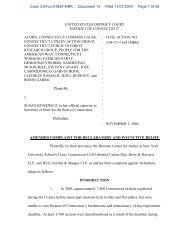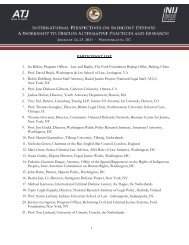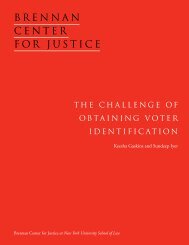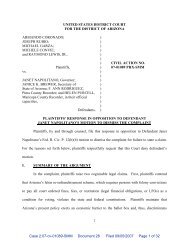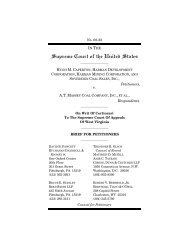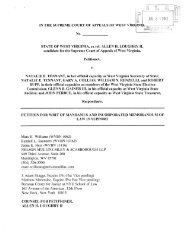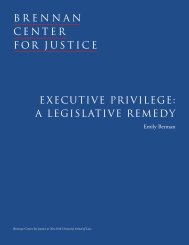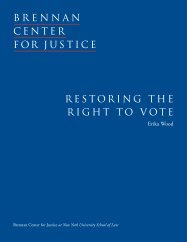THE NEW YORK STATE LEGISLATIVE PROCESS: AN ...
THE NEW YORK STATE LEGISLATIVE PROCESS: AN ...
THE NEW YORK STATE LEGISLATIVE PROCESS: AN ...
Create successful ePaper yourself
Turn your PDF publications into a flip-book with our unique Google optimized e-Paper software.
maybe 20 staff people saw it before it arrived on our desk [and] it was like a Bible.<br />
It was such a huge bill.” 189 The bill itself was 61 pages long. 190<br />
Historical evidence indicates that the constitutional provision that created the<br />
message of necessity has never really functioned as intended. As early as 1895,<br />
the New York Times criticized the Legislature for allegedly abusing this measure in<br />
order to rush a bill through. 191 An 1895 report by the Commission to<br />
Recommend Changes in Methods of Legislation (appointed by the governor)<br />
asserted that existing scheduling restrictions were insufficient and called for further<br />
regulations, including a day calendar printed at least one day in advance and<br />
limitations on the filing of private and local bills. 192 At the 1915 constitutional<br />
convention, delegates proposed to eliminate the governor’s ability to waive<br />
the three-day aging requirement with a message of necessity. Finding that from<br />
1895 to 1915, 502 bills were passed using the message of necessity, “and it was<br />
doubted whether one real emergency” could be found among them, the delegates<br />
concluded that the governors “apparently had used this extraordinary power to<br />
promote the convenience of the Legislature, to expedite party measures and to<br />
prevent discussion in or out of the Legislature.” 193 The 1915 constitution proposed<br />
by convention delegates was rejected by the voters. 194 Although abolition of<br />
the message of necessity provision was proposed again in constitutional amendments<br />
in 1916 and 1917, the proposed amendment never made it through the<br />
legislative process to a popular vote. 195<br />
Based on these persistent complaints, the 1938 constitutional convention<br />
succeeded in revising the provision to require the governor to state not only that<br />
it is necessary to vote on the bill more quickly, but also the reasons why. 196 The<br />
delegates’ reasons for the change echoed the original aims of the provision: to<br />
avoid a last-minute rush of bills and to allow legislators a chance to study bills<br />
before voting on them. 197 In practice, a delegate acknowledged, the governor “has<br />
a printed form in which he certifies to the necessity for the immediate passage.”<br />
Requiring the governor to certify the reasons would not be likely to end the use<br />
FIGURE 13<br />
<strong>NEW</strong> <strong>YORK</strong> <strong>STATE</strong> LEGISLATURE<br />
■ USE OF MESSAGES OF NECESSITY IN PASSAGE OF MAJOR LEGISLATION 1997-2001<br />
<strong>NEW</strong> <strong>YORK</strong> <strong>STATE</strong>’S <strong>LEGISLATIVE</strong> <strong>PROCESS</strong> 29<br />
Message of Necessity Message of Necessity<br />
for at Least for Both Senate<br />
Message of Necessity Message of Necessity One Chamber’s Vote and Assembly Vote<br />
Year Total Bills Passed for Assembly Vote Only for Senate Vote Only (% of Total Bills Passed) (% of Total Bills Passed)<br />
1997 43 0 (0%) 1 (2.3%) 7 (16.3%) 6 (13.9%)<br />
1998 60 1 (1.7%) 2 (3.3%) 19 (31.7%) 16 (26.7%)<br />
1999 72 4 (5.6%) 3 (4.2%) 17 (23.6%) 10 (13.9%)<br />
2000 82 1 (1.2%) 4 (4.9%) 29 (35.4%) 24 (29.7%)<br />
2001 51 0 (0%) 6 (11.8%) 11 (21.6%) 5 (9.8%)<br />
1997-2001 308 6 (1.9%) 16 (5.2%) 83 (26.9%) 61 (19.8%)



